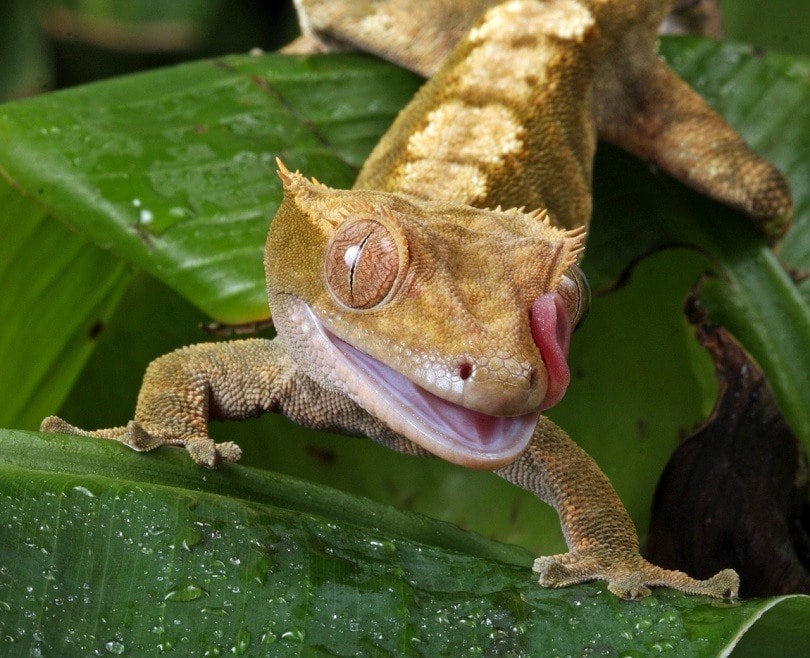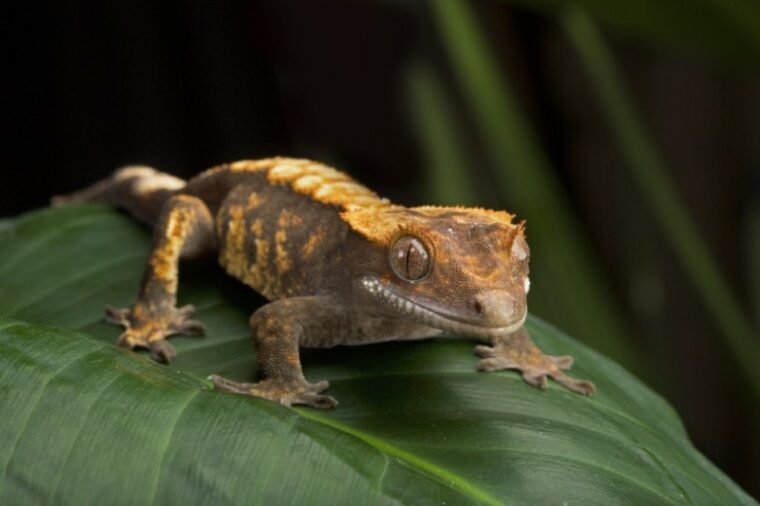
Unless you live under a rock, you have likely seen a gecko at one time or another. Geckos are popular pets because they are small, easy to care for, and quite unique. In fact, these small creatures are so unique that they warrant an entire article dedicated just to their fascinating and fun facts.
To learn 43 fascinating and fun facts about geckos, read on.
The 43 Gecko Facts
The 14 Facts About Gecko Anatomy
1. Geckos quite literally have sticky fingers.
These allow them to stick to any surface as long as it’s not Teflon.
2. Tiny hairs are what cause them to stick.
Even though geckos’ sticky fingers look like the work of glue, the geckos stick due to microscopic hairs.
3. They have light sensitivities.
Geckos’ eyes are super sensitive to light. In fact, they are 350 times more sensitive than human eyes.
4. Geckos can detect colors.
Geckos have the ability to distinguish between different colors even when there is so little light that humans are essentially colorblind.
5. Most geckos do not have eyelids.
Even though geckos have great eyesight, most do not have eyelids. Instead, they use their tongues to clean off their eyes.
6. They can make sounds when they want to.
Geckos have the ability to vocalize, such as by making clicks, barks, and chirps, although the creatures tend to be very quiet.
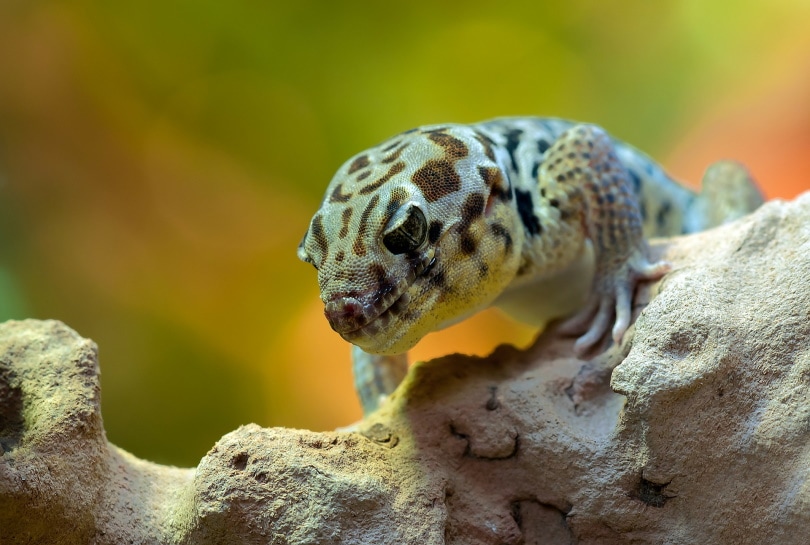
7. Not all geckos have legs.
There are some species that have no legs and almost look like snakes. However, they are different from snakes in that they can vocalize, hear wonderfully, and can detect different tones that snakes cannot.
8. Some geckos can glide through the air.
Certain species of geckos have flaps of skin around their feet and tails so that they can glide through the air.
9. The smallest gecko is tinier than some bugs!
The smallest gecko is not even 2 centimeters long. It is native to the Dominican Republic and Beata Island.
10. Geckos are the smallest lizard.
The two smallest types of geckos are the smallest types of lizards, too.
11. Scientists can easily determine if a gecko is diurnal or nocturnal by looking at the gecko’s pupils.
Nocturnal geckos have vertical pupils, whereas diurnal geckos have round pupils.
12. Light can pass through their ear canals.
If you flashlight through one of the gecko’s ears, the light will continue out through the other ear.
13. Geckos shed their skin very frequently.
Some species shed their skin as frequently as every 2 weeks.
14. Geckos can replace their teeth.
Geckos can replace all 100 teeth in a period of 3 to 4 months.

 The 5 Facts About Gecko Reproduction
The 5 Facts About Gecko Reproduction
15. They make noise for a few different reasons.
Even though geckos primarily make noise to defend their territory, they also click to attract a mate.
16. The gestation period can be VERY long.
A female gecko can be pregnant for years before laying her eggs.
17. Eggs are usually laid out of sight.
Female geckos almost always lay their eggs inside leaves or bark.
18. Geckos are among some of the longest hatchlings.
Even though geckos are considered relatively small lizards, their hatchlings are surprisingly long in comparison to other lizards.
19. Some types of geckos are parthenogenic.
This is a fancy word that means females can reproduce without mating with a male. It is because of this trait that scientists believe geckos have been able to populate the entire world, though the trait does come with some downsides.

 The 11 Facts About Gecko Survival Tactics
The 11 Facts About Gecko Survival Tactics
20. They can have long lifespans.
Geckos are hardy reptiles because they can live to be 20 years old. Some geckos have even lived to be nearly 30.
21. Their main form of defense is sound.
Geckos often protect their territory from one another through their unique vocalizations.
22. They can choose to lose their tail.
Gecko species are able to drop their tails to distract predators, and many can even grow these tails back. However, some geckos will be able to drop their tail but not grow it again.
23. You can detect where their tail will disconnect.
You can easily spot where the gecko will drop its tail by looking for a score of spotted lines. This spotted line is where the tail will break off from the body.
24. Geckos will eat a tail they have shed.
If a gecko survives after shedding its tail, it will often go back to see if it remains. If it is still there, it will eat its tail for nutrients because of the next fact.
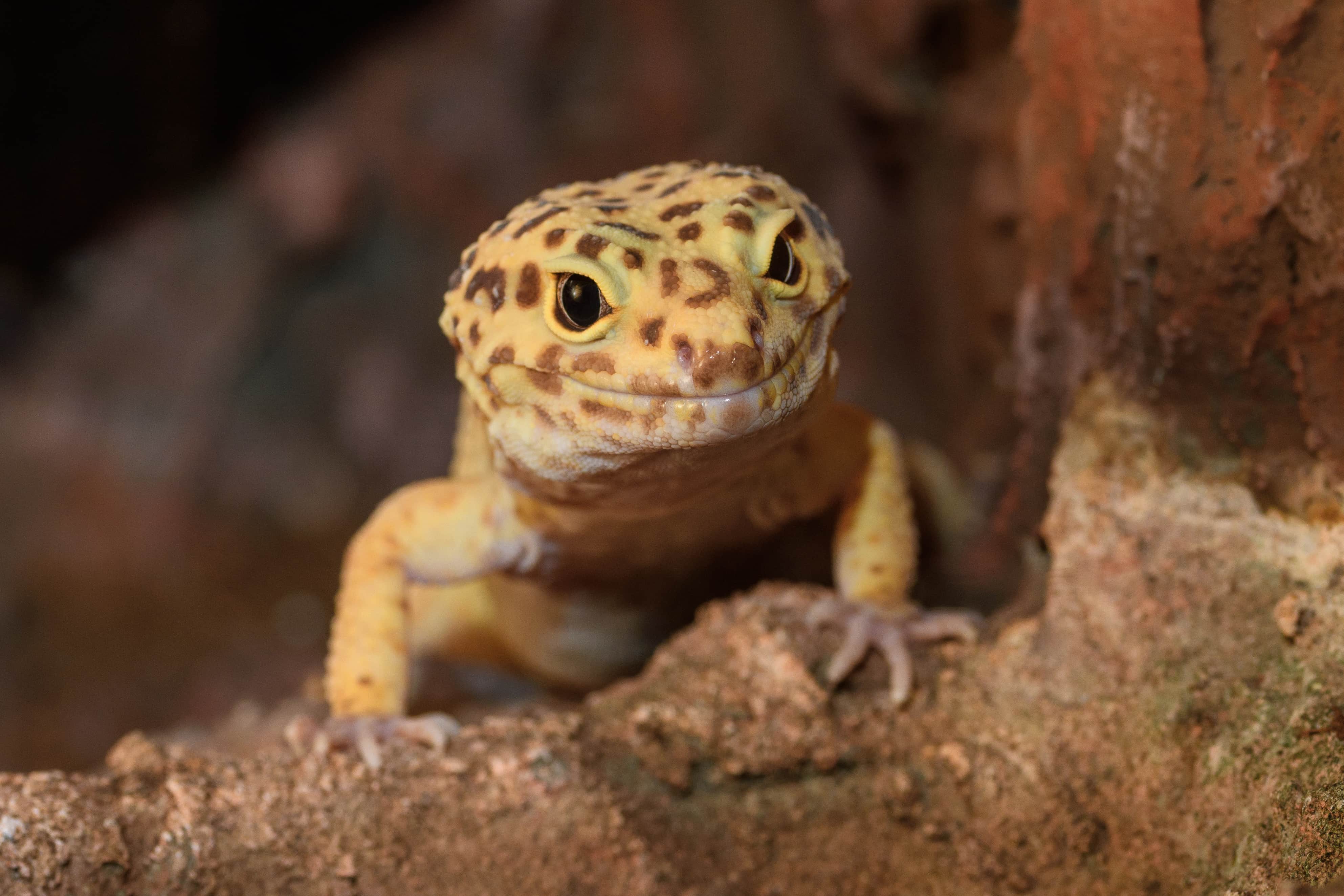
25. Tails hoard nutrients.
Whenever times are robust in terms of food, geckos store extra fat and nutrients in their tails that they can use during the tough times.
26. Geckos can change color.
Many geckos can change their colors to match their surroundings, much like a chameleon. They can even do this without seeing their surroundings.
27. Tails vary between breeds.
The satanic leaf-tailed gecko has such a unique tail that it looks like a dead leaf.
28. Geckos have a strategy to always land on their feet.
Whenever a gecko is falling, it twists its tail at a right angle so that the animal lands on its feet. It only takes 100 milliseconds for geckos to direct their tail in such a way.
29. Geckos primarily only eat bugs.
This classifies them as insectivores.
30. They eat other smaller creatures, too.
Even though geckos are considered insectivores, they are known to eat other creatures if they’re small enough to do so.
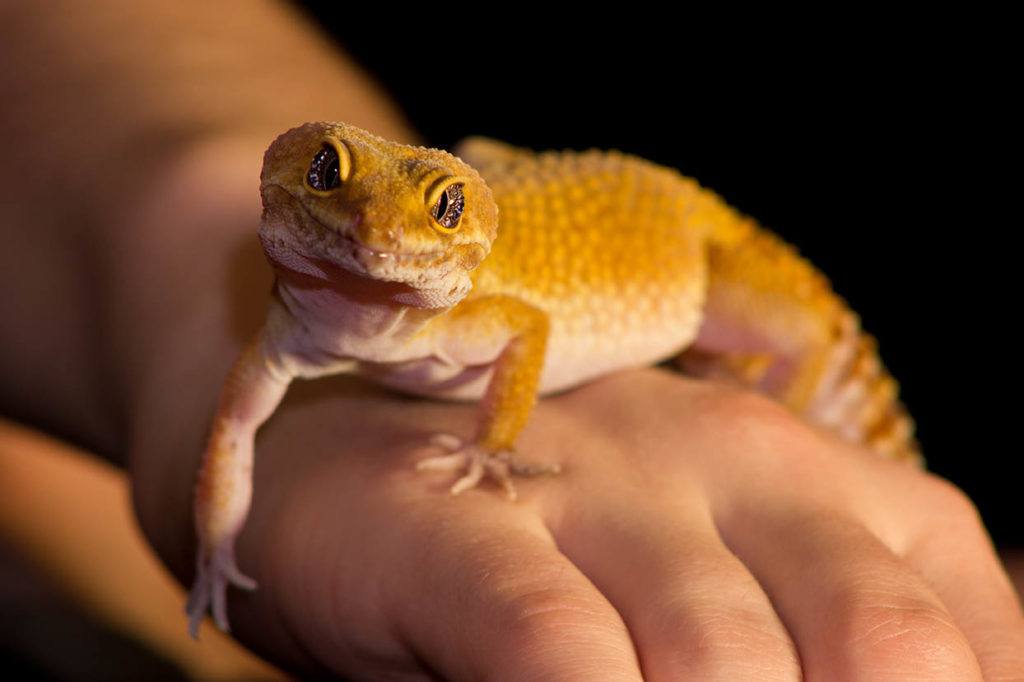
 The 13 Other Fun Facts About Geckos
The 13 Other Fun Facts About Geckos
31. There are hundreds of gecko breeds.
In fact, there are over 1,000 types of geckos.
32. Some geckos cannot blink.
Of the thousands of geckos, they are divided into only two species. One species can blink and the other cannot.
33. The gecko’s sticky fingers inspire inventors!
Geckos’ sticky fingers have actually inspired scientists to find new ways to create sticky products, such as tires and medical bandages.
34. Geckos live worldwide.
Geckos can be found on every continent around the globe except Antarctica.
35. Geckos call nearly every habitat home.
This includes rainforests, mountains, and even deserts.
36. The gecko has been a mascot of GEICO since 1999.
Though the company has never claimed what sort of gecko the mascot is.

37. You can find gecko species on all parts of conservation classifications.
Some gecko species are ranked as least concern whereas others are considered critically endangered.
38. The largest gecko was believed to be the Kawekaweau, which is no longer in existence.
There was only one specimen found of this species, and it was found in stuffed form inside a museum in France. It is believed that this gecko was native to New Zealand, but it died out during the 19th century during colonization.
39. Their colorful skin holds an impressive lizard record.
Geckos are considered the most colorful type of lizard in existence.
40. Their names may be inspired by an Indonesian word.
It is believed that the name “gecko” comes from the Indonesian word gēkoq, which was used to imitate the sound geckoes make.
41. Leopard geckos are very common.
The most popular gecko to own as a pet is the leopard gecko.
42. Most geckos are nocturnal.
Even though geckos can be diurnal or nocturnal, the vast majority are nocturnal.
43. Geckos love human homes and owners.
Unlike many reptiles, geckos thrive around humans, likely because they are small and feast on a variety of insects common to human households.
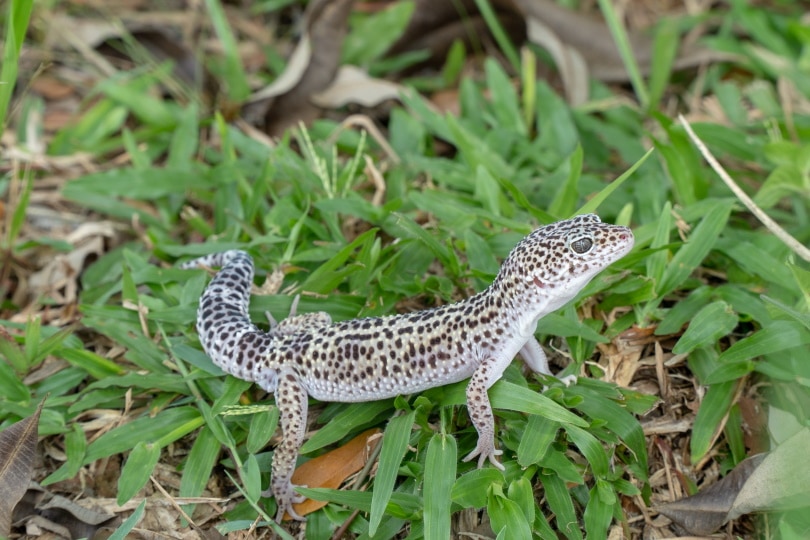
 Summary
Summary
As you can see, the gecko is a fascinating creature that warrants a lot of discussion, despite its small size. Although these 43 facts are far from being the only unique features of these creatures, they are some of the most intriguing and applicable to all gecko species.
Featured Image Credit: Jeff McGraw, Shutterstock



